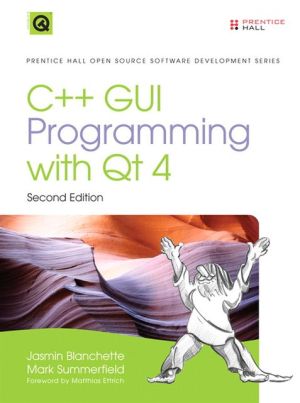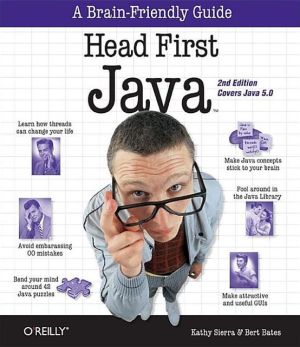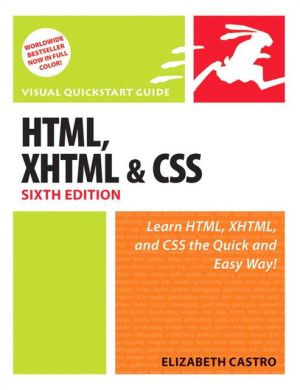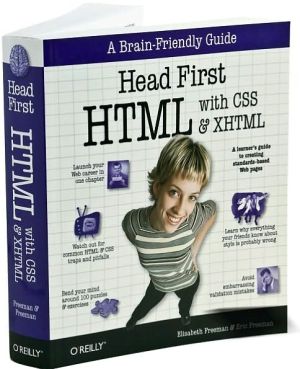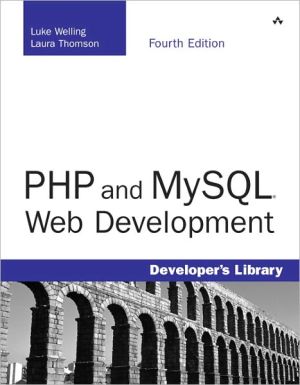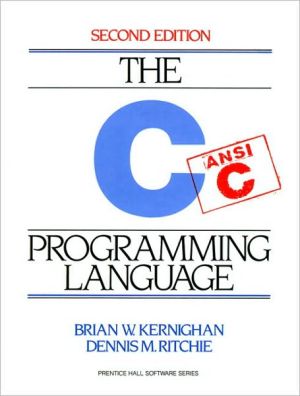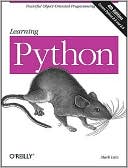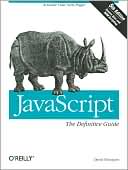C++ GUI Programming with Qt 4, 2nd Edition
The Only Official, Best-Practice Guide to Qt 4.3 Programming\ Using Trolltech's Qt you can build industrial-strength C++ applications that run natively on Windows, Linux/Unix, Mac OS X, and embedded Linux without source code changes. Now, two Trolltech insiders have written a start-to-finish guide to getting outstanding results with the latest version of Qt: Qt 4.3.\ Packed with realistic examples and in-depth advice, this is the book Trolltech uses to teach Qt to its own new hires....
Search in google:
The Only Official, Best-Practice Guide to Qt 4.3 ProgrammingUsing Trolltech's Qt you can build industrial-strength C++ applications that run natively on Windows, Linux/Unix, Mac OS X, and embedded Linux without source code changes. Now, two Trolltech insiders have written a start-to-finish guide to getting outstanding results with the latest version of Qt: Qt 4.3.Packed with realistic examples and in-depth advice, this is the book Trolltech uses to teach Qt to its own new hires. Extensively revised and expanded, it reveals today's best Qt programming patterns for everything from implementing model/view architecture to using Qt 4.3's improved graphics support. You'll find proven solutions for virtually every GUI development task, as well as sophisticated techniques for providing database access, integratingCompletely updated throughout, with significant new coverage of databases,Covers all Qt 4.2/4.3 changes, including Windows Vista support, native CSS support for widget styling, and SVG file generationContains separate 2D and 3D chapters, coverage of Qt 4.3's new graphics view classes, and an introduction to QPainter's OpenGL back-endIncludes new chapters on look-and-feel customization and application scriptingIllustrates Qt 4's model/view architecture, plugin support, layout management, event processing, container classes, and much morePresents advanced techniques covered in no other book—from creating plugins to interfacing with native APIsIncludes a new appendix on Qt Jambi, the new Java version of Qt
Qt is a comprehensive C++ application development framework for creating cross-platform GUI applications using a "write once, compile anywhere" approach. Qt lets programmers use a single source tree for applications that will run on Windows 98 to Vista, Mac OS X, Linux, Solaris, HP-UX, and many other versions of Unix with X11. The Qt libraries and tools are also part of Qt/Embedded Linux, a product that provides its own window system on top of embedded Linux.\ The purpose of this book is to teach you how to write GUI programs using Qt 4. The book starts with "Hello Qt" and quickly progresses to more advanced topics, such as creating custom widgets and providing drag and drop. The text is complemented by a set of examples that you can download from the book's web site, http://www.informit.com/title/0132354160. Appendix A explains how to download and install the software, including a free C++ compiler for those using Windows.\ The book is divided into three parts. Part I covers all the fundamental concepts and practices necessary for programming GUI applications using Qt. Knowledge of this part alone is sufficient to write useful GUI applications. Part II covers central Qt topics in greater depth, and Part III provides more specialized and advanced material. You can read the chapters of Parts II and III in any order, but they assume familiarity with the contents of Part I. The book also includes several appendixes, with Appendix B showing how to build Qt applications and Appendix C introducing Qt Jambi, the Java version of Qt.\ The first Qt 4 edition of the book built on the Qt 3 edition, although it was completely revised to reflect good idiomatic Qt 4 programming techniques and included new chapters on Qt 4's model/view architecture, the new plugin framework, embedded programming with Qt/Embedded Linux, and a new appendix. This extended and revised second edition has been thoroughly updated to take advantage of features introduced in Qt versions 4.2 and 4.3, and includes new chapters on look and feel customization and application scripting as well as two new appendixes. The original graphics chapter has been split into separate 2D and 3D chapters, which between them now cover the new graphics view classes and QPainter's OpenGL back-end. In addition, much new material has been added to the database,\ This edition, like its predecessors, emphasizes explaining Qt programming and providing realistic examples, rather than simply rehashing or summarizing Qt's extensive online documentation. Because the book teaches solid Qt 4 programming principles and practices, readers will easily be able to learn the new Qt modules that come out in Qt 4.4, Qt 4.5, and later Qt 4.x versions. If you are using one of these later versions, be sure to read the "What's New in Qt 4.x" documents in the reference documentation to get an overview of the new features that are available.\ We have written the book with the assumption that you have a basic knowledge of C++, Java, or C#. The code examples use a subset of C++, avoiding many C++ features that are rarely needed when programming Qt. In the few places where a more advanced C++ construct is unavoidable, it is explained as it is used. If you already know Java or C# but have little or no experience with C++, we recommend that you begin by reading Appendix D, which provides sufficient introduction to C++ to be able to use this book. For a more thorough introduction to object-oriented programming in C++, we recommend C++ How to Program by P. J. Deitel and H. M. Deitel (Prentice Hall, 2007), and C++ Primer by Stanley B. Lippman, Jos¿Lajoie, and Barbara E. Moo (Addison-Wesley, 2005).\ Qt made its reputation as a cross-platform framework, but thanks to its intuitive and powerful API, many organizations use Qt for single-platform development. Adobe Photoshop Album is just one example of a mass-market Windows application written in Qt. Many sophisticated software systems in vertical markets, such as 3D animation tools, digital film processing, electronic design automation (for chip design), oil and gas exploration, financial services, and medical imaging, are built with Qt. If you are making a living with a successful Windows product written in Qt, you can easily create new markets in the Mac OS X and Linux worlds simply by recompiling.\ Qt is available under various licenses. If you want to build commercial applica-tions, you must buy a commercial Qt license from Trolltech; if you want to build open source programs, you can use the open source (GPL) edition. The K Desktop Environment (KDE) and most of the open source applications that go with it are built on Qt.\ In addition to Qt's hundreds of classes, there are add-ons that extend Qt's scope and power. Some of these products, like the Qt Solutions components, are avail-able from Trolltech, while others are supplied by other companies and by the open source community; see http://www.trolltech.com/products/qt/3rdparty/ for a list of available add-ons. Trolltech's developers also have their own web site, Trolltech Labs (http://labs.trolltech.com/), where they put unofficial code that they have written because it is fun, interesting, or useful. Qt has a well-established and thriving user community that uses the qt-interest mailing list; see http://lists.trolltech.com/ for details.\ If you spot errors in the book, have suggestions for the next edition, or want to give us feedback, we would be delighted to hear from you. You can reach us at qt-book@trolltech.com. The errata will be placed on the book's web site http://www.informit.com/title/0132354160.
Series Editor's Note xiForeword xiiiPreface xvAcknowledgments xviiA Brief History of Qt xixBasic QtGetting Started 3Hello Qt 3Making Connections 5Laying Out Widgets 6Using the Reference Documentation 10Creating Dialogs 13Subclassing QDialog 13Signals and Slots in Depth 20Rapid Dialog Design 23Shape-Changing Dialogs 31Dynamic Dialogs 38Built-in Widget and Dialog Classes 39Creating Main Windows 45Subclassing QMainWindow 46Creating Menus and Toolbars 50Setting Up the Status Bar 55Implementing the File Menu 57Using Dialogs 63Storing Settings 69Multiple Documents 71Splash Screens 74Implementing Application Functionality 77The Central Widget 77Subclassing QTableWidget 78Loading and Saving 84Implementing the Edit Menu 87Implementing the Other Menus 91Subclassing QTableWidgetItem 95Creating Custom Widgets 105Customizing Qt Widgets 105Subclassing QWidget 107Integrating Custom Widgets with Qt Designer 117Double Buffering 121Intermediate QtLayout Management 141Laying Out Widgets on a Form 141Stacked Layouts 147Splitters 149Scrolling Areas 152Dock Windows and Toolbars 154Multiple Document Interface 157Event Processing 167Reimplementing Event Handlers 167Installing Event Filters 172Staying Responsive during Intensive Processing 1752D Graphics 179Painting with QPainter 180Coordinate System Transformations 185High-Quality Rendering with QImage 193Item-Based Rendering with Graphics View 195Printing 217Drag and Drop 227Enabling Drag and Drop 227Supporting Custom Drag Types 232Clipboard Handling 237Item View Classes 239Using the Item View Convenience Classes 240Using Predefined Models 247Implementing Custom Models 252Implementing Custom Delegates 266Container Classes 273Sequential Containers 274Associative Containers 282Generic Algorithms 285Strings, Byte Arrays, and Variants 287Input/Output 295Reading and Writing Binary Data 296Reading and Writing Text 301Traversing Directories 307Embedding Resources 308Inter-Process Communication 309Databases 315Connecting and Querying 316Viewing Tables 322Editing Records Using Forms 324Presenting Data in Tabular Forms 330Multithreading 339Creating Threads 340Synchronizing Threads 343Communicating with the Main Thread 349Using Qt's Classes in Secondary Threads 356Networking 359Writing FTP Clients 359Writing HTTP Clients 368Writing TCP Client-Server Applications 371Sending and Receiving UDP Datagrams 381XML 387Reading XML with QXmlStreamReader 388Reading XML with DOM 395Reading XML with SAX 400Writing XML 404Providing Online Help 407Tooltips, Status Tips, and "What's This?" Help 407Using a Web Browser to Provide Online Help 409Using QTextBrowser as a Simple Help Engine 411Using Qt Assistant for Powerful Online Help 414Advanced QtInternationalization 419Working with Unicode 420Making Applications Translation-Aware 423Dynamic Language Switching 429Translating Applications 435Look and Feel Customization 439Using Qt Style Sheets 439Subclassing QStyle 4543D Graphics 471Drawing Using OpenGL 471Combining OpenGL and QPainter 477Doing Overlays Using Framebuffer Objects 484Creating Plugins 491Extending Qt with Plugins 492Making Applications Plugin-Aware 502Writing Application Plugins 505Application Scripting 509Overview of the ECMAScript Language 510Extending Qt Applications with Scripts 519Implementing GUI Extensions Using Scripts 523Automating Tasks through Scripting 530Platform-Specific Features 543Interfacing with Native APIs 543Using ActiveX on Windows 547Handling X11 Session Management 559Embedded Programming 567Getting Started with Qt/Embedded Linux 568Customizing Qt/Embedded Linux 570Integrating Qt Applications with Qtopia 571Using Qtopia APIs 576AppendixesObtaining and Installing Qt 589Building Qt Applications 593Introduction to Qt Jambi 605Introduction to C++ for Java and C# Programmers 623Index 665
